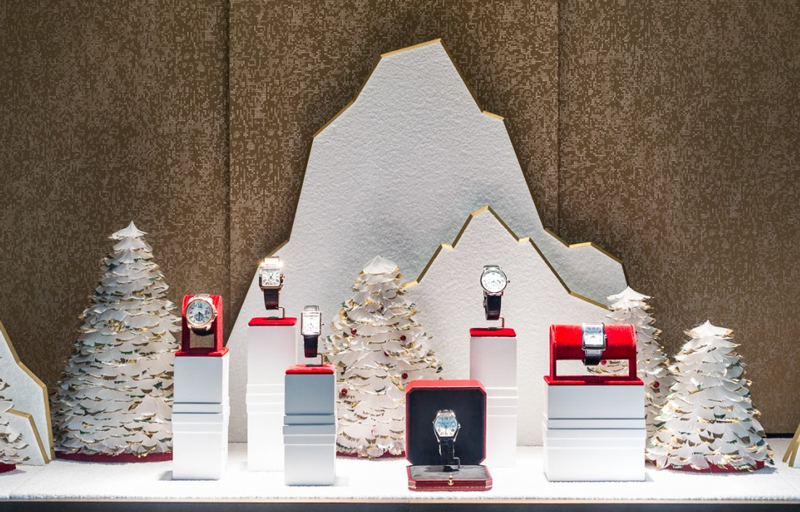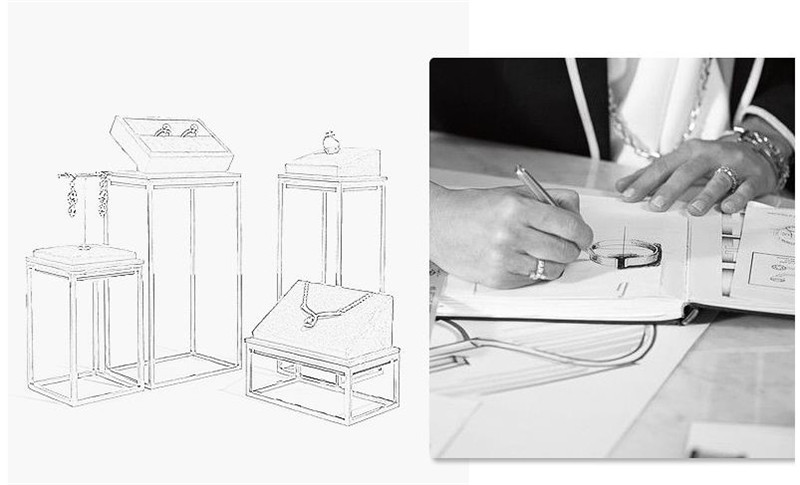In addition to the basic elements of jewelry display (easy selection, improving freshness, increasing value, attracting attention, etc.), from the overall consideration of the display, there are more important functional elements, including theme, focus, balance, proportion, composition, Color, space planning, consensus conventions, repetition effects, capacity planning and serialization, and ergonomics, among other principles, are integrated into the basic operational process of display.

Adopting these principles will help you arrange serialized products from an overall perspective, give featured products the most prominent position, and reasonably match different types of products. The overall display purpose with refined form and rich connotation has only one purpose, so that possible sales can be achieved as soon as possible.
From the display effect of the specialty store, customers can feel the brand culture of a brand, that is, the style, product positioning and market positioning of a brand. The theme should change with festivals, promotions. When the festival changes, from the display effect of the entire store, customers can clearly know the main promotion and the main promotion category of the festival; in different promotional activities, customers can clearly know the specific content of this promotion.
Store jewelry display needs to be updated frequently
The display of jewelry stores needs to be constantly changing, but this requires standardized management. As a store manager, you must start from the following aspects to manage the display of the store on a daily basis. First of all, new products are regularly developed and put on the cabinet, and the new light box pictures are replaced in time. Second, reset the normal product display layout every month. Re-display according to the style of the product to add freshness.
The orderly color theme can give the whole special thematic and orderly visual effect and strong impact. In the display, color is often used to set the focus or create a balanced effect of product display, so that it can produce rhythm, coordination and layering, and easily lock the target product. Therefore, it is necessary to understand the basic knowledge of color composition and the principle of color matching between jewelry and props.
The basic composition of color - hue, lightness, purity

Hue: Refers to the appearance of a color. For example: red, orange, yellow, green, cyan, blue, purple, etc. Hue has nothing to do with color intensity and light and shade, but purely expresses the difference in color appearance. Brightness: refers to the brightness of the color, the amount of light reflected by different colors is different, resulting in different degrees of light and dark. Purity: The purity of the color, which is also the saturation of the color.
In line with people's psychological orientation, it leads to visual harmony, stability, order and simplicity. The principle of balance can be used to arrange products in an orderly manner and deliver consistent visual effects. The principle of balance runs through the entire wall and individual, and the combination display should pay attention to the relevance of the product series. From this, it is necessary to understand the various ways of displaying jewelry. Generally there are the following:

①Symmetrical composition method. ②The rhythm composition method and the harmony composition method. ③ Left and right asymmetric display and triangular display method.
According to the principle of ergonomics, the space layout, lighting settings, flow direction guidance, size ratio and other principles are reasonably displayed. The distance between the guide cabinets in the middle of the store should not be less than 120 cm. The flow direction of customers after entering the door is smooth and convenient, and they can contact as many products as possible. The store is well lit, without dark places and dazzling lights. Consider the placement of consumers' shopping habits as much as possible. It can shorten the distance between customers and products to the greatest extent, and arouse customers' desire to consume.

At the same time, attention should be paid to the basics of jewelry counters. Shopping guides need to master the characteristics of the counter in the specific layout and display of the counter, in order to fully understand the function of the counter, and in the display work, they can better complete the display of jewelry and achieve the best display effect.
Commodities have two properties: for people to watch and browse; for people to have a desire to buy.
This drawing method is set according to the customer's psychological process, and the customer's psychological activities are summarized in eight stages: watching - feeling interested - associating - generating desire - comparing and weighing - trusting - deciding action - satisfying.

At present, the symmetry method, the contrast method and the rhythm method are mainly used.
Symmetry method: The jewelry is displayed according to the principle of symmetry, and its subdivision can be divided into axisymmetric method and center symmetry method. Axisymmetric method: take the center line of the counter top as the axis of symmetry, and the jewelry on both sides are symmetrical one by one. Common patterns include rectangles, trapezoids and various combinations. Center symmetry method: that is, jewelry is arranged symmetrically around a center, and common graphics are circular and radial.
Commentaire
(0)